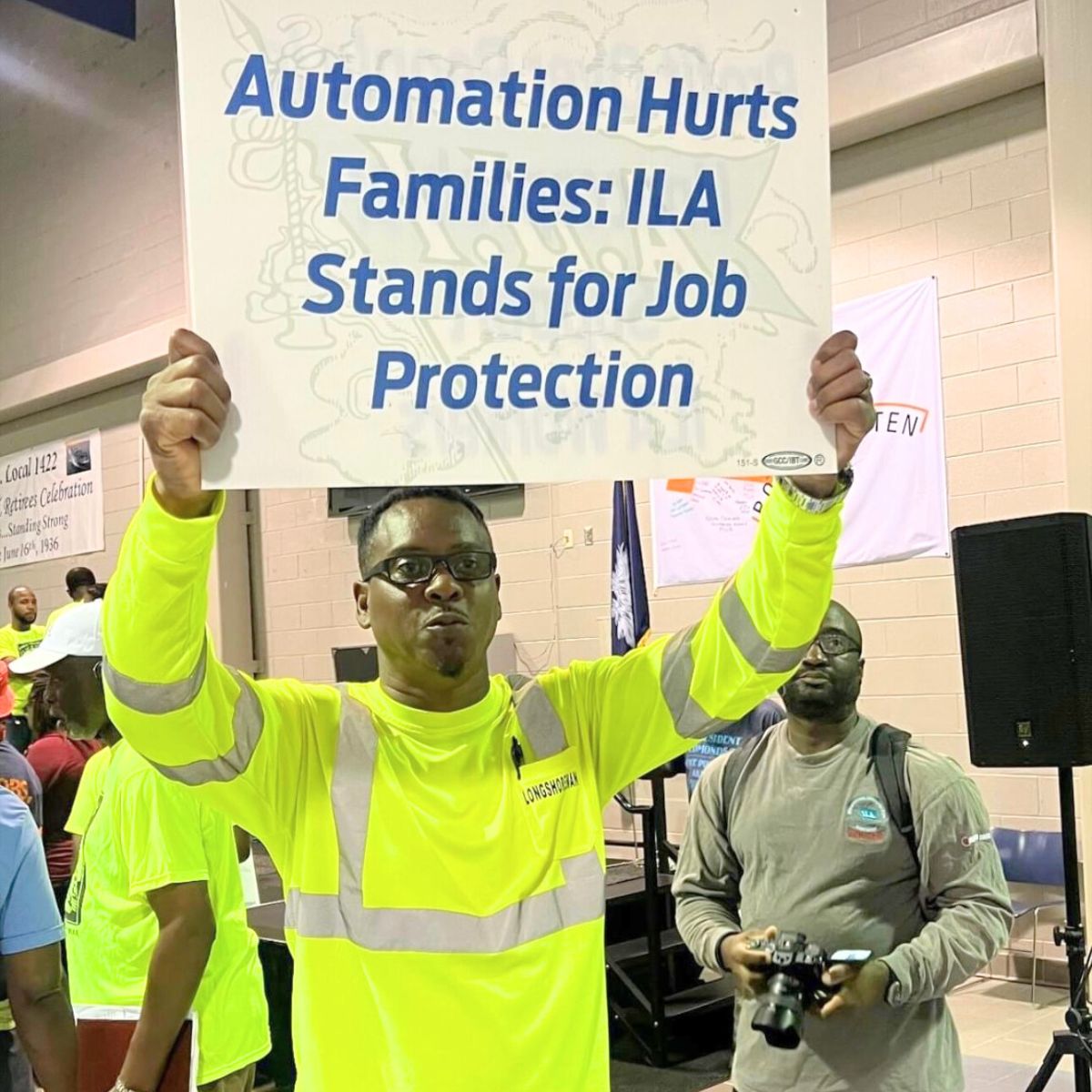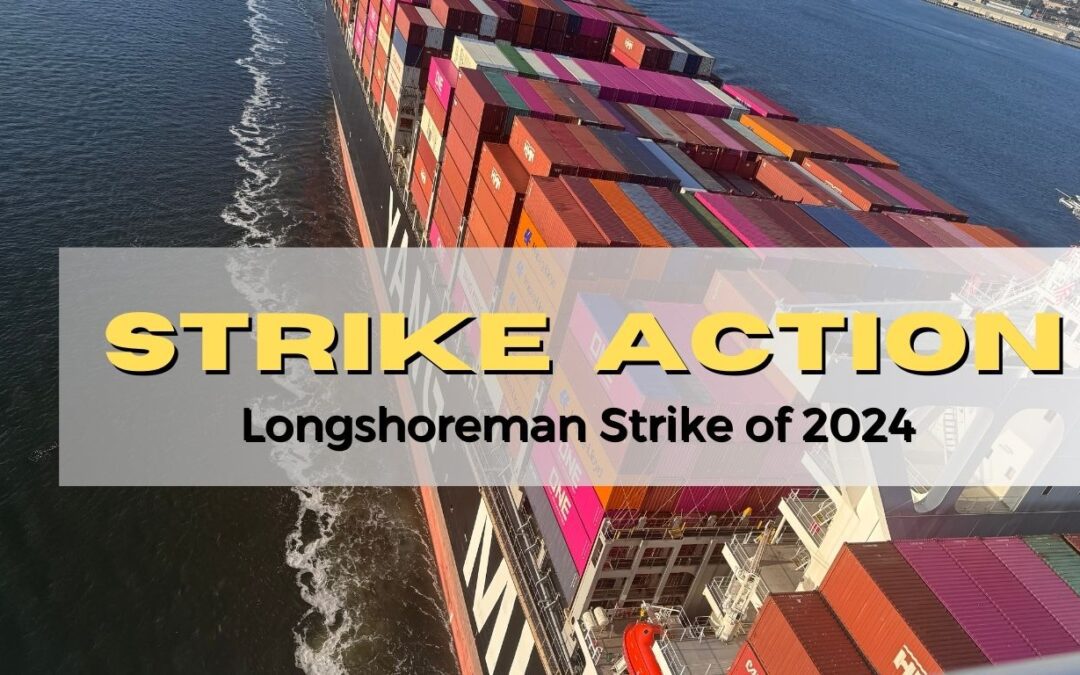There are a number of strike industries that include longshoreman under the International Longshoreman Association (ILA), UPS workers, school bus drivers, train workers, hotel workers, automotive workers, writers and so much more. A strike can significantly impact society, the economy, and various other industries, making strike industries a critical topic to explore. A strike occurs when workers collectively stop working to demand better working conditions, improved wages, or rights from their employers. This tactic is often used by trade unions to apply pressure and can disrupt major sectors, leading to broader economic effects, like strikes that cause a halt in work and production. Strike industries use strikes because they play a powerful role in advocating for workers’ rights and improving labor conditions.

One notable example is the longshoreman strike, which has recently affected U.S. ports along the eastern and southern shores/states in the U.S. When longshoremen halted operations at ports, it significantly disrupted the supply chain, highlighting the economic importance of these workers. Strikes like these often involve serious negotiations and can reshape labor practices in the industry.
Pictured on the left is Jonathan Harrell who has been a mechanic with ILA 1422-A since 2005. At midnight last night, he joined his co-workers, co-union members, and over 250,000 dock workers to start a strike that ports have not seen in over 40 years. Reasons for the most current strike at ports are discussed further.
Trade unions are central to the organization and execution of strikes, representing workers who work in strike industries and negotiating important work-related topics on their behalf. They play a vital role in ensuring fair treatment and improving workplace standards while balancing the interests of workers and employers. Their actions can push for systemic changes, leading to improved conditions for workers across various industries. This is an analysis of collection action and collective bargaining.
This information is instrumental for those who are unfamiliar with collective bargaining, particularly human resources professionals supporting organizations with unionized workers.
Strike Meaning
Strikes have been a significant tool for labor movements throughout history. They serve various purposes, from advocating for better working conditions to protesting against specific policies. As technology advances, some unions are negotiating work or tasks that can replace humans with machines, automation, or artificial intelligence.
Historical Context of Strikes
Strikes have played a crucial role in labor rights movements worldwide. In the late 19th and early 20th centuries, strikes were often used to fight for better wages and safer working conditions. Events like the Haymarket Riot in 1886 highlighted the lengths workers would go to secure their rights.
In the mid-20th century, strikes became more organized, often led by trade unions. These actions brought significant changes, such as the establishment of the eight-hour workday, personal protective gear (PPE), pay that increases with tenure or number of years worked, etc. Strikes have continued to be a method for workers to express dissatisfaction, particularly in industries with strong union presence.
For most of history, union workers were primarily blue-collar workers who worked in very dangerous conditions. As time progressed, we now have unionized workers like school bus drivers, writers, and editors.
Types of Strikes
Different types of strikes serve different purposes. An economic strike is common, where workers demand better wages or benefits. These strikes focus on direct financial concerns.
Another type, the wildcat strike, occurs without union approval, highlighting immediate worker grievances. Meanwhile, sympathy strikes involve workers supporting other worker groups, even if their conditions are unaffected. These strikes showcase solidarity across various industries and situations, playing a key role in broader labor movements.
Overview of Strike Industries
Strike industries are well-regarded for its innovative firearm accessories catering to enthusiasts and professionals alike. Its products are known for durability and functionality, and it holds a significant influence in the firearms market.
Market Influence of Various Strike Industries
Workers in strike industries significantly impact the market. Since workers in various strike industries are creators or manufacturers of everyday items like cars, airplanes, and railways, the stop or pause in work is nearly instantly noticeable to supply and demand within the economy. There are most cases where union negotiations take place and are agreed upon or settled long before unionized workers begin to strike or stop working.
Since strikes have a direct and nearly immediate impact on business and corporate revenue, then collective bargaining conversations become immediately prioritized and negotiated until the company and the union representatives reach an agreement. A lot of behind-the-scenes meetings, conversations, and suggestions take place long before workers begin to strike. In most cases, both parties try to avoid strikes since workers are not typically guaranteed compensation while on strike.
More tenured unions, like railroad, automotive, and port unions, have revised their collective bargaining agreement (CBA) over time to include actions that are not noticeable until strikes begin. Some of these topics are continued employee benefits, compensation during strikes, and the like.
The Longshoreman Strike
The Longshoreman Strike has the potential to disrupt global trade significantly and lead to challenging negotiations. The impact on port operations can ripple through the economy, affecting businesses and consumers alike.
Since consumers realize how important ports are, then there has been an increased number of shoppers in stores to get their everyday necessities, like food and household products.
Impact on Global Trade
The Longshoreman Strike on the East and Gulf Coasts can lead to severe disruptions in global trade. U.S. ports, from Maine to Texas, are key entry points for goods, handling a large portion of imports and exports. A port shutdown can cause delays and potential shortages, impacting various sectors, including manufacturing and retail.
Daily port operations are vital for maintaining supply chains. During a strike, containers may remain idle, which can lead to increased shipping costs and delayed delivery times. Businesses relying on just-in-time inventory systems may face challenges, potentially leading to increased prices for consumers, more marketing tactics, or losing customers.
The broader economic repercussions can extend beyond the U.S., affecting trade partners globally. Companies dependent on American goods and services will need to consider alternate supply routes. Negotiations and contingency planning become crucial as stakeholders look to minimize the impacts of the strike on trade.
Resolution and Outcomes
Resolving the Longshoreman Strike involves negotiations between unions and management, focusing on demands like wage increases or higher pay, protection against automation, hikes in recruitment, and working conditions. The key issue often centers around labor agreements related to automation and job security. As seen in previous negotiations, a balance must be found to satisfy both parties.
In resolving a strike, reaching a compromise is essential. This usually involves a series of negotiations where counteroffers are exchanged. Higher wages and better working conditions may be negotiated to address union demands, as seen in recent discussions with the International Longshoremen’s Association.
Outcomes of such strikes can set precedents for future labor relations, shaping the landscape of the shipping industry. Successful resolutions may also improve productivity once operations resume, restoring normalcy to trade and reinforcing the importance of communication and compromise in labor disputes.
The Functions of Trade Unions
Trade unions play a vital role in safeguarding worker rights and ensuring lawful strike actions. They serve as a bridge between employees and employers, negotiating work-related concerns like fair market pay increases, better or safer working conditions, continued work, and fair treatment.
Negotiating Worker Rights
Trade unions are essential in negotiating worker rights. They often advocate for higher wages, better working conditions, and job security. Through collective bargaining, trade unions represent the interests of workers to employers.
One key function is to negotiate contracts that can improve employee benefits, such as health insurance, pensions/retirement plans, or paid leave. They also address workplace safety concerns to ensure a safer working environment. By doing so, trade unions help in leveling the playing field, especially when it comes to negotiations with large corporations.
Trade Unions and Strike Legality
Strike actions are significant tools that trade unions use to press for workers’ demands. Legality is a crucial aspect, as strikes must comply with labor laws and regulations. Trade unions work to ensure that any planned strike follows legal procedures, such as providing the required notice to employers.
They play a critical role in organizing strikes to minimize disruptions while achieving objectives. Trade unions also guide workers on their rights during a strike, including avoiding unlawful activities. By managing these aspects, unions aim to create a more effective and legal approach to advocating for workers’ rights.
Key Takeaways
- Strikes are a collective action demanding better conditions.
- Longshoreman strikes impact the supply chain significantly.
- Trade unions are crucial in organizing and negotiating during strikes.
Frequently Asked Questions (FAQs)
The longshoreman strike involves demands for fair labor practices, impacting the supply chain and protection against automation. Trade unions play a crucial role in organizing strikes, a movement that has evolved since the Industrial Revolution. Strikes can also affect sectors like food, medical, and gas supply.
What are the core demands of the longshoreman strike?
Longshoremen are striking for better wages, safer working conditions, and job security through protections against automation.
How could the longshoreman strike affect the supply chain?
The strike could greatly disrupt trade at major ports. This disruption can delay shipments of essential goods, leading to supply shortages and potential price hikes for consumers. These complications emphasize the importance of resolving the conflict swiftly.
What precautions should consumers consider during a port strike?
Consumers might face shortages in goods, such as fresh produce, household goods, medication, and regularly used items. It’s advisable to stock up on non-perishable items and consider alternative suppliers. Staying informed about strike developments can also help mitigate potential inconvenience.
In what ways do trade unions participate in organizing strikes?
Trade unions play a pivotal role in coordinating strikes. They represent workers’ interests by negotiating with employers and organizing strike activities. Their efforts aim to secure fair labor agreements and protect employees’ rights.
How has the strike movement evolved since the Industrial Revolution?
Since the Industrial Revolution, strikes have grown as a tool for workers to demand rights. Initially spontaneous, they are now more organized and legally protected, reflecting societal shifts toward recognizing labor rights as fundamental.
What are the potential impacts of a strike on the energy sector, specifically gas supply?
Strikes can interrupt the transportation of fuel, potentially causing regional shortages and price increases. The energy sector relies on stable logistics to maintain supply chains, meaning strikes can lead to significant disruptions if prolonged.
You May Also Like:
- Hotel Workers Strike Disrupts Major Cities in 2024
- Chat GPT and Artificial Intelligence (AI)
- What is a Collective Bargaining Agreement?
- Port Workers Strike Across the East and Gulf Coasts



 Subscribe to my channel
Subscribe to my channel